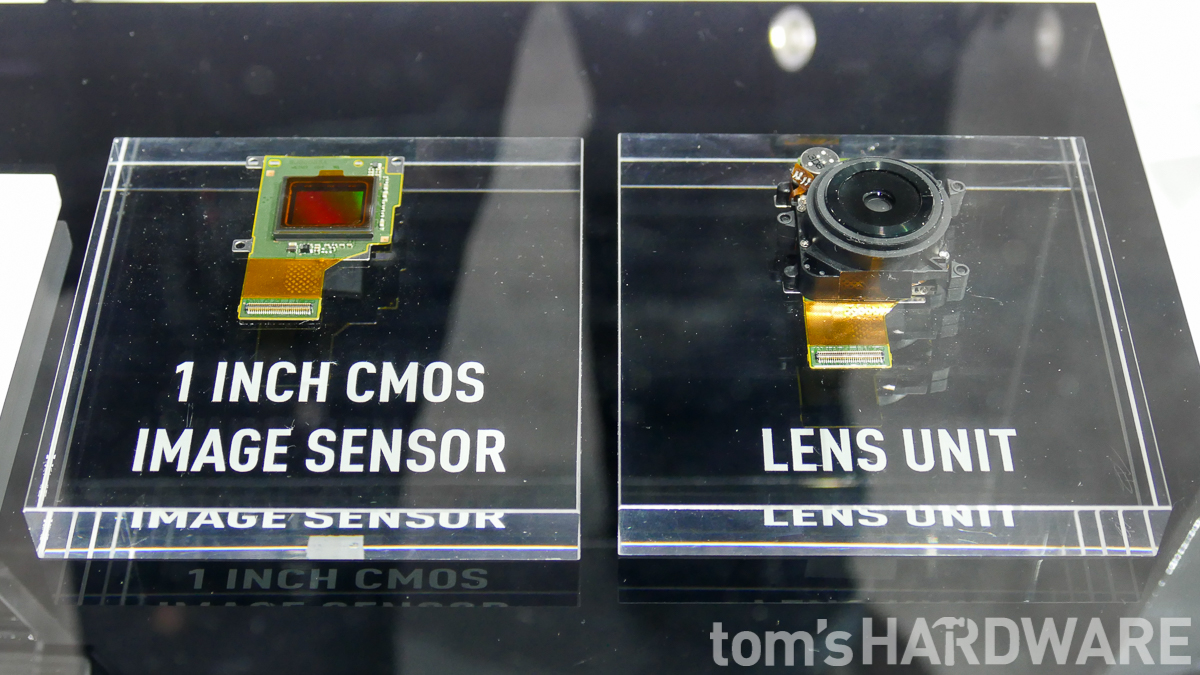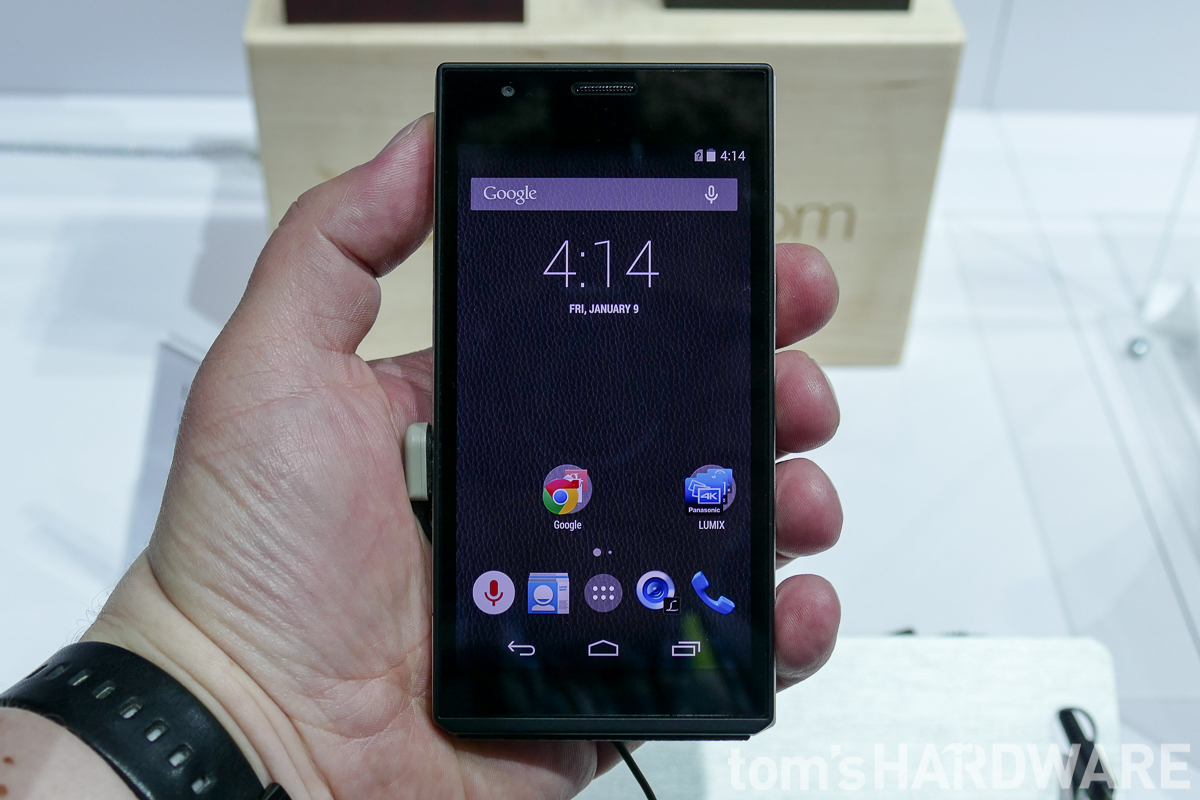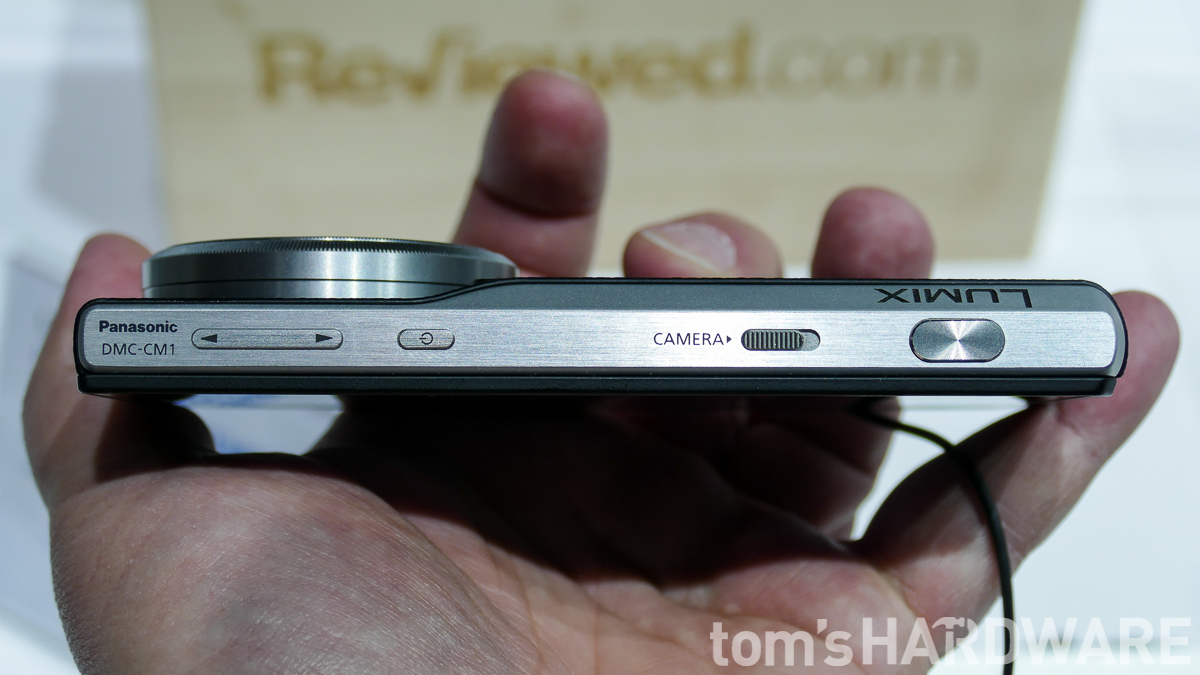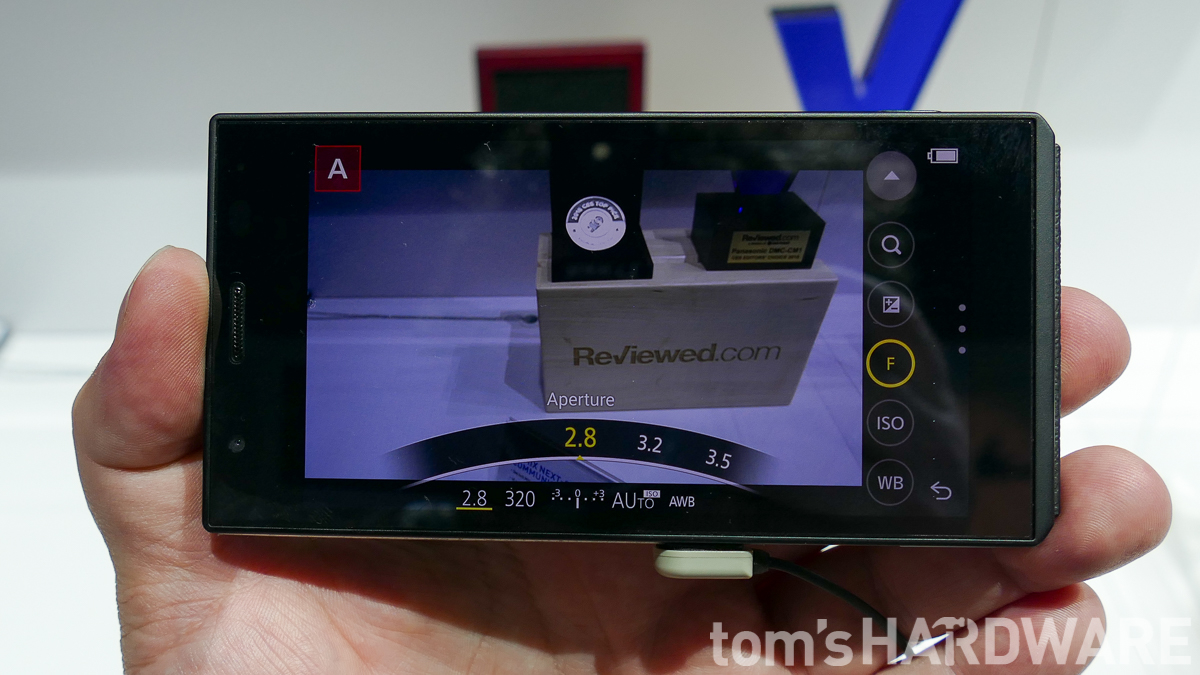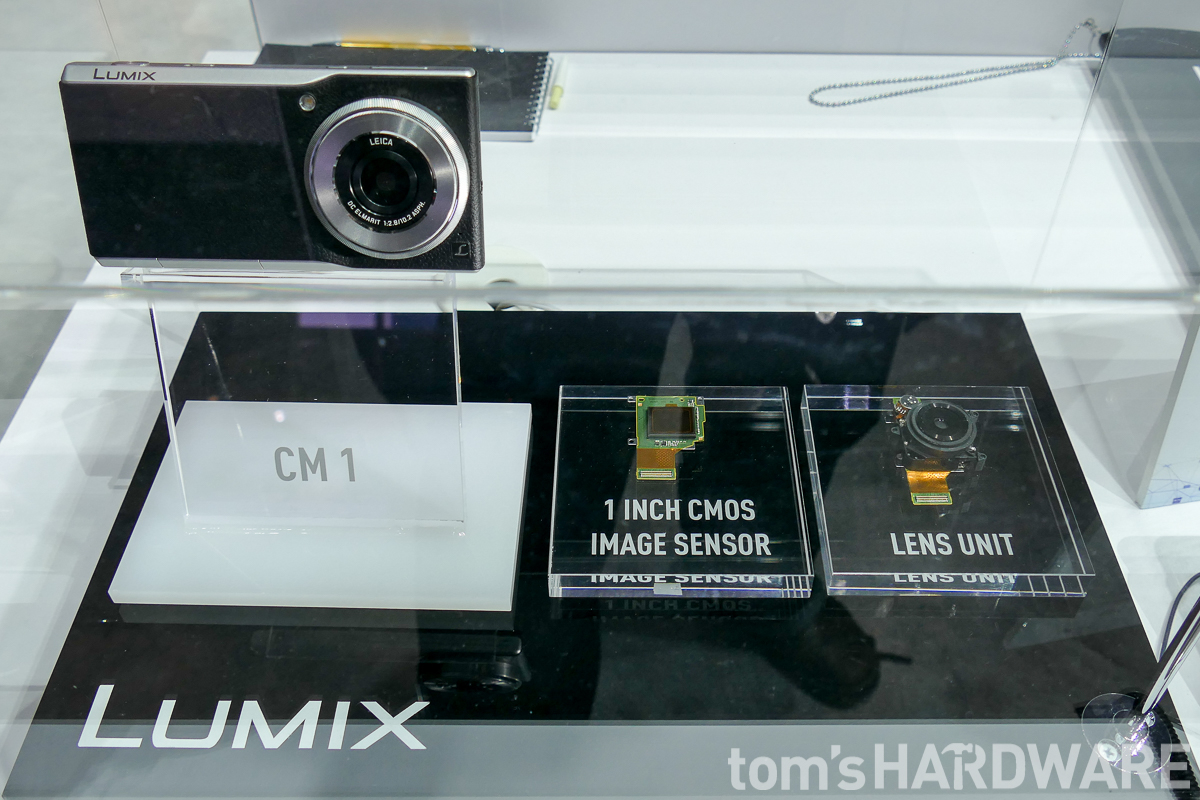Panasonic Lumix CM1 Smart Camera, Hands On
Smartphone cameras have been steadily improving, and while many are good enough for taking casual pictures in good lighting, their small sensors and depth-constrained optics keep photo quality well below what's achievable with a dedicated point-and-shoot camera.
Samsung tried to solve this discrepancy by putting a smartphone inside a camera with its Galaxy Camera series. It was an interesting idea, but Samsung's Galaxy Camera and Galaxy Camera 2 both failed in one crucial area: Their cameras just weren't very good. Using small (1/2.3'') image sensors produced mediocre pictures that couldn't match the image quality of point-and-shoot cameras in the same price range.
Panasonic's new LUMIX Smart Camera CM1 looks to finally bridge the gap by combining up-to-date, powerful Android hardware with a camera using a 1-inch image sensor, the largest ever seen on a smartphone. While the CM1 has been out in a few select European markets since December, at CES this year it was announced that it will be coming to North America.
Tech Specs
| SoC | Qualcomm Snapdragon 801 (MSM8974AB) |
|---|---|
| CPU | Qualcomm Krait 400 (4 Core) @ 2.26 GHz |
| GPU | Qualcomm Adreno 330 @ 578 MHz |
| Memory | 2 GB LPDDR3 |
| Display | 4.7-inch IPS LCD @ 1920 x 1080 (469 ppi) with Gorilla Glass |
| Storage | 16 GB, microSD (up to 128 GB) |
| Battery | 2,600 mAh (non-removable) |
| Cameras | Front: 1.1 MPRear: 20.1 MP 1-inch CMOS sensor with f/2.8 28mm LEICA lens |
| Audio | Mono |
| Expansion Ports | microUSB 2.0, microSD |
| Connectivity | Wi-Fi 802.11a/b/g/n/ac, Bluetooth 4.0 LE, NFCCat 4 LTE Bands 1/3/4/5/7/8/20 |
| Dimensions | 135.4 x 68.0 x 21.1* mm |
| Weight | 204 g |
| Operating System | Android 4.4 (KitKat) |
* with camera -- phone body alone is 15.2 mm
As a phone, the Panasonic CM1 has decent specifications, with a Snapdragon 801 SoC, 4.7-inch 1080p display, 2,600 mAh battery, and Cat 4 LTE connectivity. As a premium-level product, it's constructed mostly from metal, and its build-quality is top-notch. However, it certainly looks and feels more like a camera than a phone, with that boxy retro look that so many cameras are using today.
Still, for what it is, this phone/camera combo is reasonably compact and can be used as a phone fairly comfortably, which can't be said of Samsung's Galaxy Cameras. What the CM1 isn't is a smartphone that just happens to have a decent camera, like the Lumia 1020 or the upcoming Asus ZenFone Zoom.
Get Tom's Hardware's best news and in-depth reviews, straight to your inbox.
The camera uses a 1-inch Sony 20.1 MP sensor, the same one found in cameras such as the Sony RX100 or Panasonic FZ1000 (which is the camera I used for the stills and video in this article). This sensor is approximately seven times larger than the average sensor found in other smartphones and is capable of producing substantially better-looking images.
Panasonic has combined this sensor with an f/2.8 Leica lens with a 28 mm focal length. However, despite the fact that the lens extends (as can be seen in the picture above) when you use the camera, the CM1 does NOT have any optical zoom. Even so, the large sensor and high MP count should still allow you to use a limited amount of digital zoom without impacting the image quality severely. The CM1 also does not have optical image stabilization (OIS).
Along with the class-leading camera hardware, the CM1 also has the most advanced camera software we've seen on a phone. The ridged ring around the camera on the front of the phone is a dial that can be used to manually adjust everything, including focus, aperture, shutter speed and white balance. The options menu allows you to adjust every aspect of the camera, just as you can on a fully-featured high-end point-and-shoot camera. However, the CM1 still has a full automatic mode and a selection of scene settings to choose from, providing a more smartphone-like experience if desired. The CM1 can also shoot in RAW mode.
We didn't get to take any pictures with the CM1 at CES, but the sample images shown to us were phenomenal and by far the best we've seen produced by a phone. We did get to play around with the CM1 for a few minutes, which you can watch in the video below:
While we can't really pass a verdict on the Panasonic CM1 after our limited amount of time with it, there are a couple of issues that we do think are worth mentioning. First, there doesn't seem to be a lens cover, so you'll want to keep it in a case when not in use to prevent scratching. Second, the lack of OIS and any optical zoom are omissions that we think Panasonic should incorporate in the CM1's successor, even if it means a thicker device.
Another issue is that the CM1 cannot shoot proper 4K video. It is limited to a 15 fps mode that is designed so users can pull 4K stills. The fact that it can't shoot 4K 30 fps video when other Snapdragon 801-powered smartphones can is odd. Perhaps it's using a different ISP than what's provided in the Snapdragon SoC.
The Panasonic LUMIX Smart Camera CM1 is already available in Germany and France for €899 Euros and the UK for £799. That translates to approximately $1,050 USD, but we're not sure if this is the price it will sell for when it's released in North America later this year.
You can learn more about the CM1 on Panasonic's UK site.
Follow Alex Davies @alexbdavies. Follow us @tomshardware, on Facebook and on Google+.
-
everlast66 I am pretty sure this was announced some time ago, probably Photokina in 2014.Reply
It a huge engineering achievement for them to fit this large sensor there. I have it in a Sony RX100 camera and it is class leading. However, we'll have to see how many compromises they had to make with the optics to make them so small.
The rumours are that it will sell for $1000 in the US, off contract -
dstarr3 If you want a camera, it's a mediocre camera. If you want a phone, it's a mediocre phone. Ho hum.Reply -
everlast66 @dstarr3Reply
"If you want a camera, it's a mediocre camera. If you want a phone, it's a mediocre phone."
I don't agree. If they haven't made too many compromises with the optics, which I believe they haven't because Leica agreed to put their brand on it, it should be much better than 99% of point & shoot cameras out there. The remaining 1% account for Sony RX100 versions which are a step up in quality (uses the same sensor), but only because it is a dedicated camera and Zeiss build a larger and exceptionally good lens for it.
The RX100 image quality is considered by many to be on par with entry level DSLR cameras. -
gggplaya @dstarr3Reply
"If you want a camera, it's a mediocre camera. If you want a phone, it's a mediocre phone."
Not so, 1" sensor is quite large, should have much better light sensitivity to any point and shoot camera. It would fall just under a micro four thirds camera in picture quality, the limiting factor being the lens. but I doubt you could beat the picture quality with anything else that fits in your pocket. Meaning you never have to miss a shot, but still get real dynamic color range and great lighting better than most point and shoots. -
eklipz330 nothing on optical zoom and the flash looks pretty wimpy... that quickly went from very interesting/disruptive to this is neat but expensive. add a decent 4x optical zoom and an included flash and man, this think would be killer.Reply -
everlast66 @eklipz330Reply
"nothing on optical zoom and the flash looks pretty wimpy... that quickly went from very interesting/disruptive to this is neat but expensive. add a decent 4x optical zoom and an included flash and man, this think would be killer. "
I personally will prefer for the fixed lens to stay. You can always move closer with your feet or crop part of the image, alter all you've got 20Mp.
It is not physically possible to make a compact ZOOM lens for such a large sensor, it will have lower quality and be 2-3 times bigger. Keep in mind that P&S cameras have a sensor that is several times smaller and their lens is much bigger than this. So the current fixed 28mm equivalent lens is impressive achievement in itself. -
gggplaya @eklipz330Reply
"nothing on optical zoom and the flash looks pretty wimpy... that quickly went from very interesting/disruptive to this is neat but expensive. add a decent 4x optical zoom and an included flash and man, this think would be killer. "
It's clear you know nothing about cameras or photography. Fixed lens gives you a lower wider aperture, therefore a narrower DOF and better low light sensitivity. Also, a much sharper and less distorted picture.
Zooms are a heavy compromise and heavily supplemented with flash which washes everything out and oversaturates the colors. Real photographers will use flash, but dial it down to lower levels, use a diffuser, or bounce the flash off walls to even it out.
It's clear panasonic wanted to go after enthusiast or pro level photographers with this phone. Both of which features they don't want, or know how to work around.
I normally shoot with a $1800 canon 6D with a fixed 85mm lens. But it would be nice to have this phone as a carry around never miss a shot camera.

